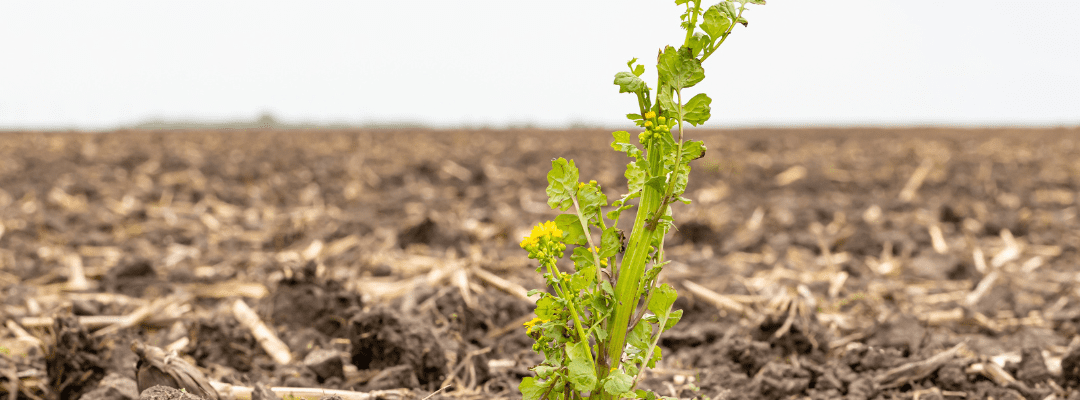The ag world is abuzz with excitement about a family of technologies that enable growers to spray just the weeds, rather than the entire field. The benefits are clear: sustainability and profitability. With growing anticipation of stricter herbicide regulation, the ability to place herbicide only where it’s needed will be essential. Regulation aside, there is a clear benefit of saving money by reducing total herbicide applied.
Sentera has been a leading innovator of drone-based weed detection technology for spot spray herbicide application since 2017, holding several patents in the field. So, what are some of these sustainable and cost-efficient methods for herbicide application?
New Technology Enables Herbicide Spot Spray
Nozzle-by-nozzle sprayers were invented to be more precise in reducing overlap, avoid over spraying field boundaries, and maintain consistent coverage during turns. However, they were not meant to enable spot spray application of herbicide, but Sentera saw the opportunity to combine this new sprayer technology with RTK drone imaging. This is when we began turning our weed maps into spot spray prescriptions.

Spot Spray Sample
A spot spray prescription is a lot like a variable rate prescription, except the rate is simply on or off and the areas are much smaller than typical variable rate prescriptions. We refer to the polygons with non-zero rate as the spray boxes. They are usually rectangular and centered on a weed.
Using Big Spray Boxes to Limit Herbicide Savings
In the early days of nozzle-by-nozzle technologies, such as John Deere’s ExactApply and Raven’s Hawkeye, equipment manufacturers were cautious largely due to the lack of experience in spot spray. They insisted on a minimum spray box size of 15 ft x 15ft, a whopping 225 square feet per weed. At this size, the promise of these dramatic herbicide reductions and precise application felt distant – except for fields with sparse weed pressure.
The limitation on herbicide savings resulting from this large spray box size caused many early adopters to pass on the technology. But, over the years, companies including Sentera, have pushed the manufacturers to lower their limits with varying success. Specifically inching down the spray box size with certain growers who insisted and understood the risk of ignoring the manufacturer’s recommendation.
But it was time to push the limits and find out just how low we could go, so we designed a set of tests to determine the minimum spray box size. We need to see more precise input applications, especially with the increases in prices and scarce availability that we have been seeing. To further experiment with spot spray technology, we worked with a cooperator this spring to run the tests and were blown away by what we discovered.
Pushing the Limit of a Smaller Spray Box
So how small of a spray box can be used in a prescription before the sprayer just can’t do it? There are several factors that impact the size of the spray box being used.
When thinking of a spray box in terms of width and length, it’s relative to the direction the sprayer is driving. The length is the distance between when spay turns on and off, whereas width is the distance across the boom. The factors vary when determining the minimum length and width, and Sentera has a patent on its technology to combine weed locations with sprayer travel direction to produce a spot spray prescription with spray boxes of different width and length.
Spray width is determined by the number of nozzles spraying, so the minimum spray box width is related to nozzle spacing. For example, 15” and 18” are two of the most common nozzle spacings.
How narrow can the spray box be before the system doesn’t even turn on a single nozzle? How many nozzles should be turned on for the weed to get a full dose?
Sentera conducted testing where we made an A-B line to reuse for all our tests, then meticulously placed stakes underneath, between, and just offset from nozzles along the line. We then surveyed the stakes with a handheld RTK unit and built a prescription with spray boxes centered on each stake.
From there, we placed water sensitivity paper on each stake, applied the prescription with a tank of water, and checked whether all targets were sprayed. We tested many widths, down to a small fraction of nozzle spacing – which showed that there is indeed a limit where the width is so narrow that not even one nozzle turns on. Through our testing we determined the minimum width to enable two nozzles, so any weed gets a full dose from the combined spray of a nozzle to its left and to its right.
Spray length is determined by when nozzles turn on and off. We performed a similar test, but this time varying the spray box length. Unlike spray width, which below a threshold resulted in no spray at all, even our smallest spray box length test produced a tiny puff of spray. The key factor in spray length then is not whether the display and system will spray, but whether it will spray in the right place.
It’s important to note that sprayers are configured with mechanical delay on-time and mechanical delay off-time. The mechanical delay on-time (measured in fractions of a second) is the time between when the display commands spray to start and when spray actually begins. It takes time to send the message, build up pressure, and enable the PWM module. Likewise, the mechanical delay off-time is the time between when the display commands spray to stop and when spray stops. These values can be calibrated in a procedure.
Many operators approach this calibration procedure casually, erring on the side of achieving a little overlap. To maximize herbicide savings in a spot spray application, this calibration is of the utmost importance. The minimum spray box length is determined by the confidence in this calibration procedure.
The Results: New Minimum Spray Box Size
In the end, for the 15” nozzle spacing on the system we tested, and for our level of confidence in our on/off time calibration, and for our operational driving speed, we determined a minimum spray box of 11 square feet, a 20x reduction over the original manufacturer’s recommended size of 225 square feet. A field that previously would have achieved 50% herbicide savings can now achieve 97% herbicide savings.
And, the savings don’t stop there. Because of the ability to deploy aerial imagery technology rather quickly to capture field-level insights, we’re able to get accurate, timely data that can generate a prescription for our spot spray technology. The prescription is hardware agnostic, and combined with the ability to spray quickly after detection, it provides a quicker solution than others on the market.
So, what’s next? These tests continue to validate the benefits that spot spray technology can offer the market for weed control – and how it can help to combat one of the toughest agronomic challenges that our industry faces today. For Sentera, we’ll continue to innovate and push the bounds of what’s possible to help drive sustainability initiatives ahead with an eye on profitability for growers, retail agronomists, and agriscience organizations.


